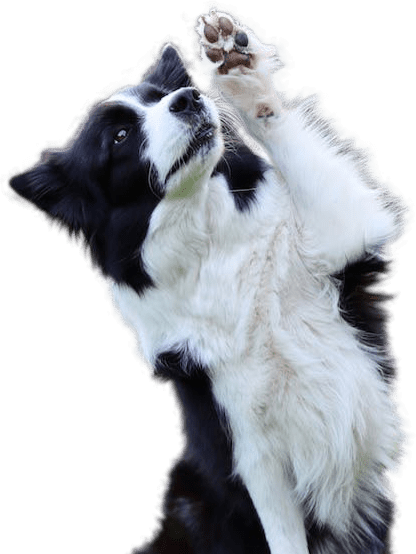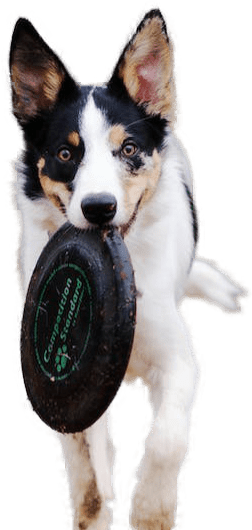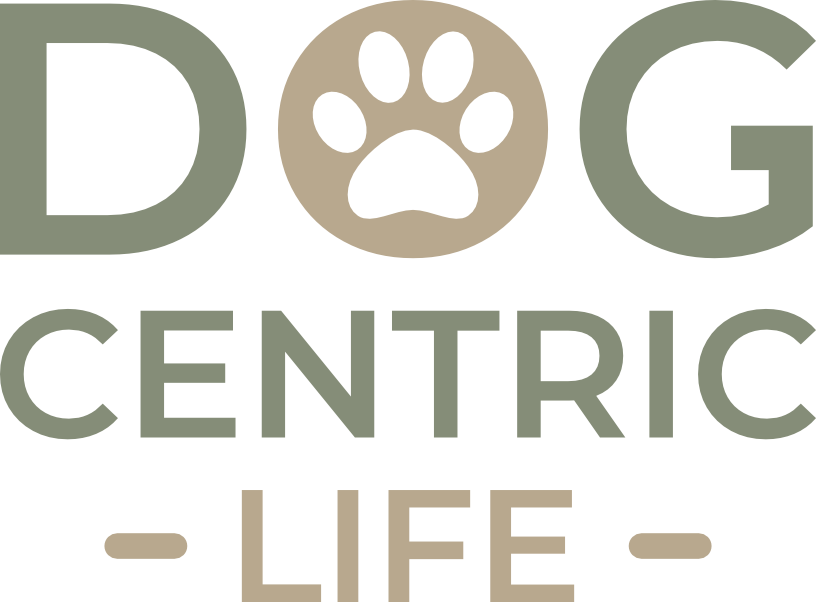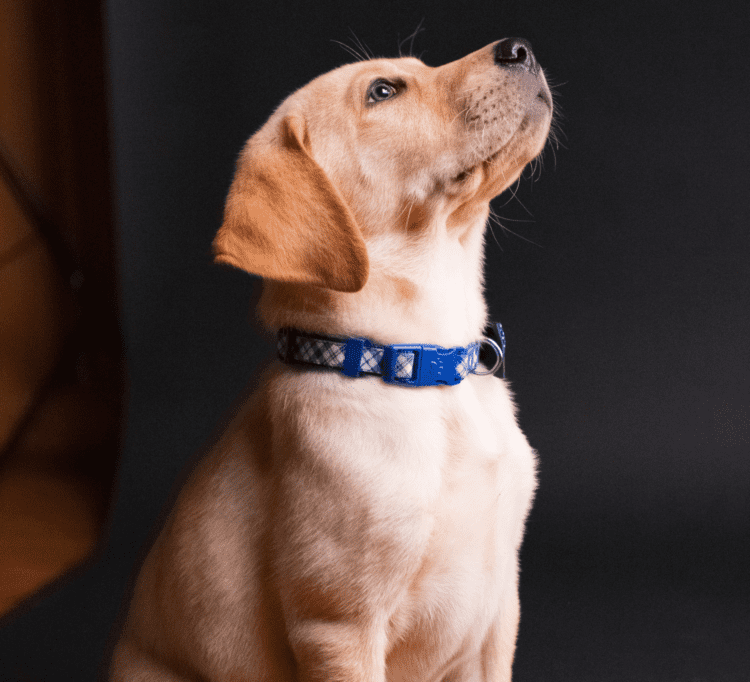I’m sure you’ve heard of the movie “How To Train Your Dragon”… well, let’s do the dog version of that! So, if you’re ready, let’s em-‘bark’ (sorry, the bad puns might continue until I finish my coffee!) on an adventure filled with wagging tails, high-fives, and hopefully a whole lot of fun too. The truth is, training your dog doesn’t have to be a chore; in fact, it can be a downright blast for all involved. Now this post obviously can’t explain every detail in how to train your dog, but it will go over the things that are important. So, let’s unleash the fun and get started!
Paws for Praise:
First things first, let’s talk about positive reinforcement. Just like us, our dogs thrive on praise and rewards. So, every time your dog does something paw-some (again, I apologize for the puns!), reinforce (or reward) that behavior with treats, their favorite toy, some lovin’ from you, or even a happy dance. Believe me, if it is something fun, yummy, or cuddly your dog is likely to be all in.
Before you know it, those behaviors that you are reinforcing are going to continue to happen and both you and your dog will be excited about that! Stay away from aversive methods as there is a long list of potential short and long term risks that are associated with using such measures. A key factor here… when it comes to deciding what you should be using for your dog to reward (or reinforce) them… you know your dog best. Look for things that they enjoy or love… a lot! For many, that’s food… for others though a toy is much more rewarding! Follow your dog’s lead on this and choose something that they love as they are the only ones that can determine what is truly reinforcing for them. If you pick something that isn’t reinforcing for them… you won’t have the same kind of success.

Tail-Wagging Tricks:
Who said learning can’t be fun? Teaching your dog new tricks is a fantastic way to bond and keep their minds sharp. And yes… you can teach and old dog new tricks! I suggest that you start with the basic cues like “sit,” “stay,” and “come” as these are the building blocks of good behavior, but these skills also serve as the foundation for more advanced tricks. Once you and your dog have mastered these cues you can move on to more challenging maneuvers. Maybe you want to try to teach your dog to “roll over”, or the adorable “shake a paw”? Or, if you are looking for something a little more advanced, how about “play dead” or look at dance routines with spins and jumps (keeping in mind your dog’s age and health as we don’t want to be harming joints).
The key to teaching tricks is to keep training sessions short, fun and positive (but that is really the secret behind all training – just an FYI). Use plenty of treats, praise and encouragement to keep your dog motivated and ALWAYS end on a positive note! Use your imagination to come up with ideas for tricks… or, if you’d rather use google, try searching something like “tricks to teach my dog” and you will be given a long list to choose from – whether your at the beginner stage or more advanced. The possibilities are endless!
If you are interested in more detail about The ABC’s in Dog Training – which explains in more basic terms the concept of behavior and how it works – more specifically, how positive reinforcement actually works – check out this article.

Playtime Palooza:
Incorporating playtime into your training routine not only provides physical exercise for your dog, but it also reinforces positive behavior and strengthens your bond. So grab their favorite toy, get down on their level, and let the games begin!
Imagine this… you’re out in the backyard with your dog, armed with their favorite squeaky toy or perhaps a frisbee. As you engage in a game of fetch or tug-of-war, you’re not just having a blast… but you can also reinforce behaviors and teach valuable skills. What a cool way to train your dog!
For example, when playing fetch, using cues like “fetch” or “drop it” reinforces their understanding of these cues in a playful context. As your dog retrieves the ball and brings it back to you, shower them with praise and maybe even a tasty treat. Before too long they’ll be fetching like a pro!
Tug-of-war can be another fantastic game that can double as a fun way to train your dog. Not only does it provide physical exercise and mental stimulation, but it also teaches your dog the concept of “take it” and “leave it.” Encourage them to grab onto the toy and engage in a gentle tug, but be sure to practice impulse control by asking them to release the toy on your cue.
Hide-and-seek isn’t just for kids… it’s a fantastic way to reinforce your recall and sharpen your dog’s tracking skills. Simply hide somewhere in your house, or yard (start easy and increase the difficulty as they become adept at playing), and call out your dog’s name. As they come bounding over to find you, use your positive reinforcement techniques and give them tonnes of praise, treats, or even a toy as a reward for their detective skills.
Keep play light-hearted, interactive, and tailored to your dog’s individual preferences. Whether your dog loves chasing balls, wrestling with plush toys, or sniffing out hidden treats, there’s a game out there for everyone!
Patience is a Virtue:
Rome wasn’t built in a day, and neither is a well trained dog! Remember to be patient with your dog as they navigate the ins and outs of learning. Training takes time, repetition, and consistent reinforcement, so it’s important not to expect instant results.
Imagine this… you’re teaching your dog to “sit”. You show them the treat, guide them into a sitting position, and say the cue word. At first, they might not quite understand what you’re asking of them. They may wiggle around, jump up, or even bark in confusion. But instead of getting frustrated, take a deep breath and remain calm. Dogs are incredibly perceptive animals, and they can pick up on your emotions. If you’re feeling stressed or impatient, your dog will sense it too and that can hinder their ability to learn.
Instead, approach training with a mindset of patience and understanding. Break down each behavior into small, manageable steps, and celebrate all the tiny successes along the way. If your dog struggles to grasp a concept, go back to the basics and practice the previous skills they have already learned before moving on to more advanced tasks. Again, remember to end each training session on a positive note… more specifically, with something that is a success!
Also understand that every dog learns at their own pace… just like people. Some may pick up new tricks quickly and others may take a little more time and repetition. Comparing your dog to others or setting unrealistic expectations will only lead to frustration for both of you. Instead, while you train your dog, focus on their individual progress and celebrate their accomplishments.
I didn’t forget that I mentioned being consistent at the beginning of this section. Consistency is key when it comes to training. Be consistent with your cues, rewards, and expectations, and it can be helpful to stick to a regular training schedule. This helps reinforce positive behaviors and prevents confusion for your dog.
Keep it Fun:
Last, but certainly not least, keep your training sessions fun and engaging for both you and your dog. Whether it’s practicing tricks in the park, exploring new training techniques, or simply enjoying each other’s company, make sure to inject plenty of fun into the process.
With a positive attitude, a whole lot of patience, and a tonne of love (that’s my favorite part!), training your dog can be the ultimate bonding experience.
So, what are you waiting for? Grab those treats and give it a try!
Let me know, in the comments, what’s the coolest trick your dog knows?








0 Comments